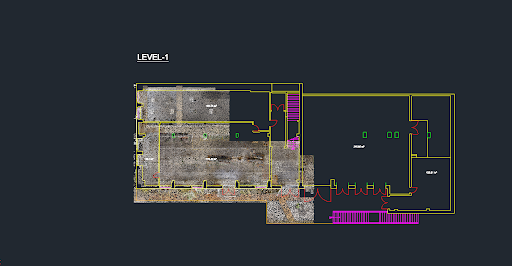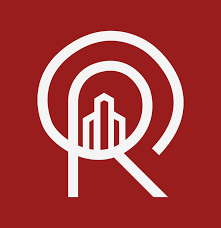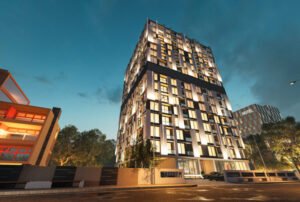Modern engineering and architectural projects demand precision that traditional measurement methods simply can’t deliver. Enter 3D laser scanning technology—a revolutionary approach that captures millions of data points in minutes, creating highly accurate digital representations of existing structures and environments.
When paired with CAD conversion services, this technology transforms raw scan data into workable design files that engineers, architects, and manufacturers can use immediately. The result? A streamlined workflow that eliminates guesswork and delivers measurable improvements across multiple project phases.
Whether you’re renovating a historic building, retrofitting industrial equipment, or creating as-built documentation, 3D laser scan to CAD conversion services offer distinct advantages over conventional surveying methods. Here are the five most significant benefits that are reshaping how professionals approach complex projects.
Increased Accuracy and Precision
Traditional measurement techniques using tape measures, rulers, and basic surveying equipment introduce human error at every step. Field technicians might misread measurements, transcribe data incorrectly, or struggle to access hard-to-reach areas safely.
3D laser scanners eliminate these variables by capturing precise measurements automatically. These devices emit millions of laser pulses per second, creating point clouds with sub-millimeter accuracy across distances of several hundred feet. The technology records exact coordinates for every surface it encounters, including complex geometries that would be nearly impossible to measure manually.
This level of precision proves especially valuable when working with existing structures that lack current documentation. Older buildings often have settling, modifications, or construction variations that deviate significantly from original blueprints. Laser scanning captures these real-world conditions exactly as they exist, providing CAD drafting professionals with reliable data to work from.
The conversion process maintains this accuracy throughout the digital workflow. Experienced technicians use specialized software to transform point cloud data into precise CAD models, preserving the measurement integrity while creating files that integrate seamlessly with standard design software.
Time and Cost Efficiency
Project timelines accelerate dramatically when teams can skip lengthy manual surveying phases. A comprehensive laser scan of a mid-sized commercial building might take just a few hours, compared to weeks of traditional measurement work by multiple surveyors.
This time savings cascades through every subsequent project phase. Designers receive accurate base data faster, allowing them to begin their work immediately rather than waiting for field teams to complete measurements. The reduced fieldwork also means fewer labor hours, travel expenses, and equipment rental costs.
Risk mitigation represents another significant cost advantage. When CAD models accurately reflect existing conditions from the start, teams avoid expensive change orders and material waste that result from design assumptions based on incomplete or inaccurate measurements. Projects stay on budget because surprises during construction become rare exceptions rather than costly norm.
The efficiency gains become even more pronounced on complex projects involving multiple stakeholders. Instead of coordinating numerous site visits by different teams, a single scanning session provides all parties with the comprehensive data they need to proceed with their respective work streams.
Enhanced Design and Visualization
Point clouds offer impressive detail, but they can be difficult for non-technical stakeholders to interpret. Converting scan data into familiar CAD formats makes project information accessible to everyone involved in decision-making processes.
CAD models enable designers to create compelling visualizations that help clients understand proposed changes within existing spaces. Architects can show how new additions will integrate with current structures, while mechanical engineers can demonstrate how equipment installations will fit within available clearances.
These visual capabilities prove particularly valuable during client presentations and approval processes. Stakeholders can see exactly how proposed designs will look and function within their actual spaces, rather than trying to interpret abstract drawings or imagine how generic designs might translate to their specific situations.
The three-dimensional nature of converted CAD models also supports advanced analysis capabilities. Engineers can perform clash detection studies, simulate lighting conditions, test different material options, and evaluate structural loads using precise geometric data derived from real-world conditions.
Improved Collaboration
Modern construction and engineering projects involve numerous specialists working simultaneously on different aspects of the same structure. Coordinating these efforts requires shared access to consistent, up-to-date project information.
3D laser scan to CAD conversion services create this common foundation by providing all team members with identical base data. Structural engineers, MEP designers, architects, and contractors can work from the same accurate measurements, reducing conflicts between different design disciplines.
Cloud-based CAD platforms extend these collaboration benefits further by enabling real-time sharing of model updates. When one team member modifies their portion of the design, others can see those changes immediately and adjust their work accordingly. This transparency prevents the coordination issues that often arise when teams work from different versions of project files.
The standardized file formats produced through CAD conversion also ensure compatibility across different software platforms. Teams using various design applications can share data seamlessly without worrying about translation errors or format incompatibilities that might introduce inaccuracies.
Reduced Errors and Rework
Construction errors stemming from inaccurate base measurements can be extraordinarily expensive to correct. When new work doesn’t fit properly with existing conditions, contractors may need to demolish completed installations, order different materials, and extend project schedules to accommodate the changes.
Accurate 3D laser scanning data prevents these problems by giving designers reliable information about actual site conditions from the beginning. CAD drafting professionals can identify potential conflicts during the design phase, when modifications require only digital updates rather than physical reconstruction.
This error prevention proves especially critical for projects involving precise equipment installations or tight spatial constraints. Manufacturing facilities, healthcare environments, and data centers often have minimal tolerance for measurement mistakes that could compromise functionality or safety requirements.
Quality assurance processes also benefit from the comprehensive documentation that CAD conversion provides. Project teams can compare as-built conditions against design intent using precise measurements rather than subjective visual inspections. This systematic approach to quality control helps maintain construction standards while providing clear documentation for future reference.
Transform Your Projects with Professional CAD Conversion
3D laser scan to CAD conversion services offer measurable improvements in accuracy, efficiency, collaboration, and quality control that translate directly into better project outcomes. These benefits become more significant as building complexity increases and project timelines compress.
Organizations ready to modernize their design workflows should evaluate their current measurement and documentation processes to identify opportunities for improvement. A professional CAD Drafting firm can assess your specific requirements and recommend scanning approaches that maximize the advantages for your particular industry and project types.
The technology continues advancing rapidly, with new scanning capabilities and CAD software features emerging regularly. Partnering with experienced service providers ensures access to the latest tools and techniques while maintaining focus on your core business activities.







